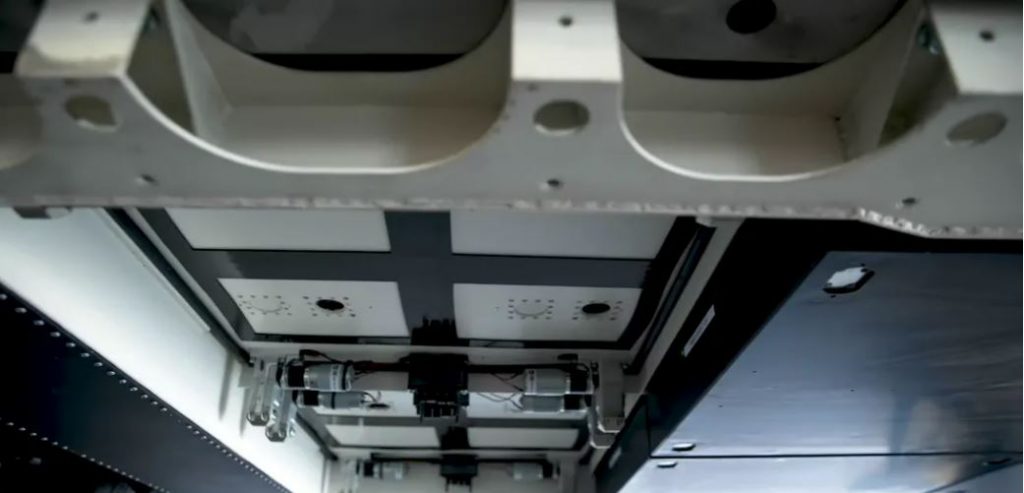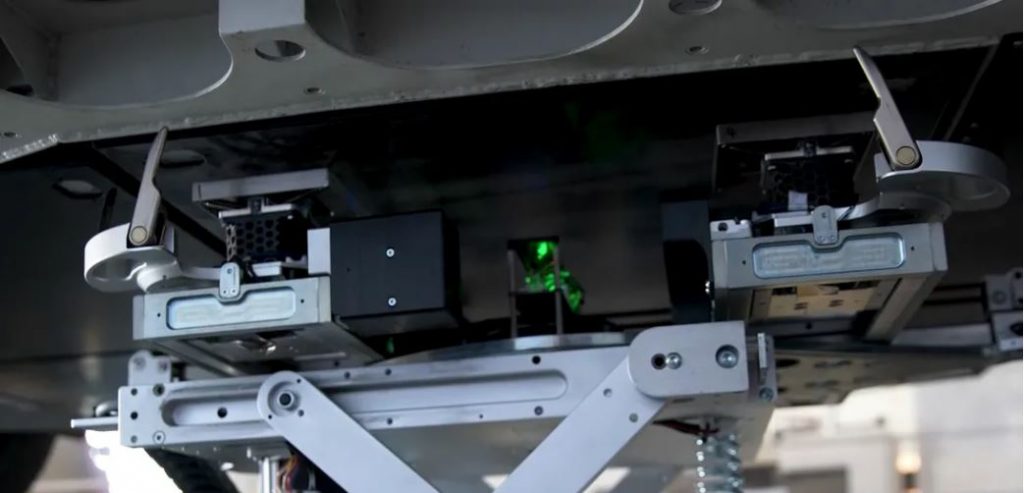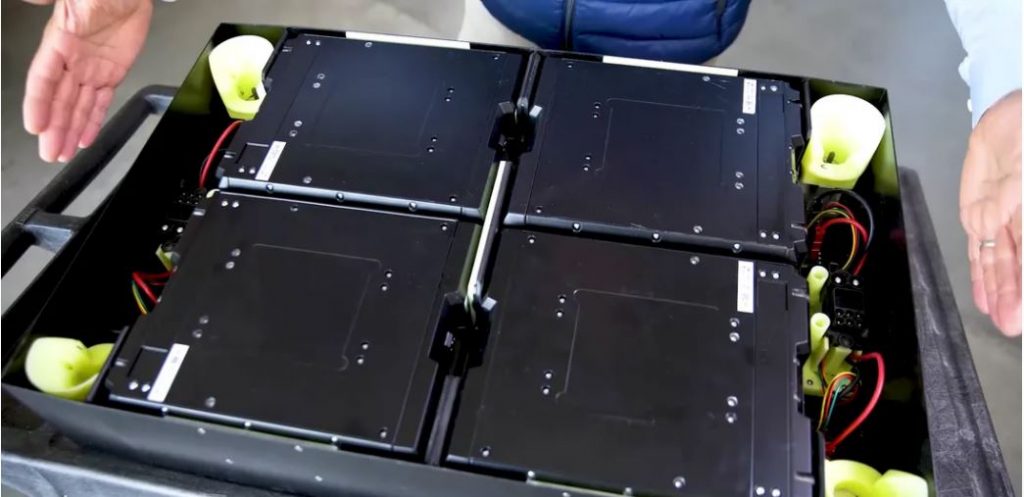The holy grail of electric vehicles is a complete charge that takes the same amount of time as a gasoline fill-up. We’re still at least a half-hour away, but Ample believes it can shorten the gap significantly with a new approach of switching EV batteries rather than recharging them in automobiles.
After the high-profile failure of Better Place in 2013 and Tesla’s withdrawal from early interest in the idea, electric car battery swapping was depicted as an ugly shade of “unworkable.” Ample’s vision is to place standard, swappable batteries under the hood of any automobile, eliminating the need for automotive engineers to design around them or for rivals to share a massive standard battery.
“We don’t require (the automaker) to make any changes to their automobile,” explains John de Souza, co-founder of Ample. “That’s a biggie. We don’t want to sell anything to OEMs; we want to sell a lot more cars.”

Ample does this by designing its interface tray beneath the car based on the size and location of the monolithic original factory battery. Next, ample pulls its standardized battery trays into that interface, which adds nearly the same overall storage capacity. The last feature is a network of charging stations that employ proprietary robots to change battery trays when a car arrives, whether for a complete swap in 10 minutes or a partial exchange in less time.

According to Ample’s de Souza, this method allows carmakers to focus on their core competencies. At the same time, his firm handles the design and service of swappable EV batteries within the carmaker’s battery area. Because an entire fixed 1,000-plus pound battery does not have to be removed, Ample’s modular battery architecture enables granularity that makes battery maintenance and upgrades considerably easier. Ample’s initial emphasis is on integrating its technology into high-utilization ride-share and corporate fleets, where it expects to see each car at least once a week, resulting in plenty of possibilities for quick battery replacement.
“Making a change is built into the model for us,” de Souza explains. “You don’t need a massive recall to get all the cars in.” This has some importance with a sort of engine that is still in the early stages of refining and debugging.

A complete battery change should take 10 minutes or less, compared to a plug-in charge, which might take 30 minutes to several hours, not considering the time an inattentive motorist may leave their fully charged EV hanging at a public charging place.
De Souza claims that carmakers are interested in Ample because the company does not try to modify what they do but instead asks them to do less, such as not putting a primary battery in some vehicles. I’m curious to see how long and how deep that welcome turns out to be: Asking a carmaker to bend their way with their batteries is akin to asking Coca-Cola to change its recipe for your vending machine. When all carmakers seek to convince a primarily skeptical public that EVs are as normal and dependable as combustion-engine vehicles, Ample will have to persuade manufacturers that its battery swaps are worthy of support and will not hurt carmakers’ image.
Charging stations are often seen as a difficult challenge in terms of real estate and electrical infrastructure, but Ample claims that their solution alleviates rather than exacerbates such demands. As far as EV technology goes, the business charges batteries at its switch stations using commonplace Level II technology that is both affordable and simple to set up. Ample will need to closely estimate demand to allow its 10-minute turnaround with slower Level II charges, much as AOL was able to sustain tens of millions of dial-up customers with many fewer modem ports than that.
Many drivers may benefit from much quicker Level III charging, such as the Tesla Supercharger network. However, de Souza believes Level III charge durations and time to scale are still too long. “People told us when we started this eight years ago that we’d soon have (ubiquitous) 350-kilowatt chargers,” he adds. “Eight years later, people are still promising us that 350-kilowatt chargers will be available next year.” He also claims that rapid DC charging is more difficult to scale with local infrastructure and is worse on batteries.
The “Goldilocks” solution for electric car charging is yet unknown, and unlike petrol stations, it may never be a one-size-fits-all option. Battery swapping, on the other hand, cleverly tackles the genuine pain of charging infrastructure rather than an overblown emphasis on battery capacity for managed electric fleets, which are likely to rise in significance.


